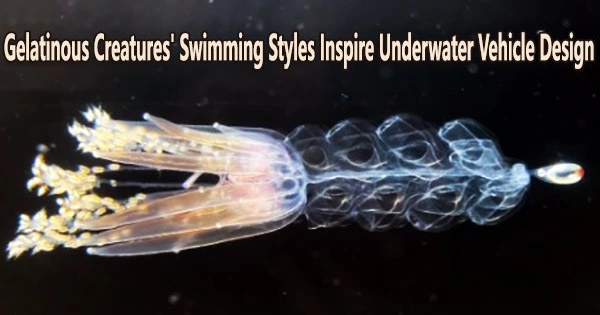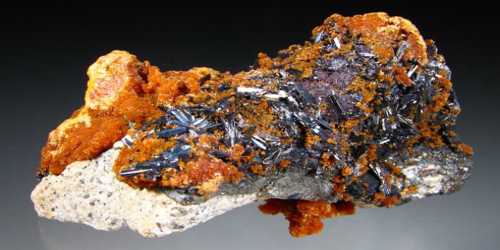Engineers could learn a thing or two from a gelatinous aquatic monster. A sea creature related to jellyfish called Nanomia bijuga uses jet propulsion to swim. To move the animal forward, a dozen or more spongy structures on its body pump water backwards. Additionally, it has the ability to manually regulate each jet by pulsing or syncing them together.
According to the animal’s present needs, these two distinct swimming techniques enable it to prioritize either speed or energy economy, according to a group of researchers from the University of Oregon. The finding might influence undersea vehicle design, enabling engineers to create more durable machines that can operate well in a range of environments.
The UO team, led by marine biologist Kelly Sutherland and postdoctoral researcher Kevin Du Clos, report their findings in a paper publishing November 28 in Proceedings of the National Academy of Sciences.
“Most animals can either move quickly or in a way that’s energetically efficient, but not both,” said Sutherland. “Having many, distributed propulsion units allows Nanomia to be both fast and efficient. And, remarkably, they do this without having a centralized nervous system to control the different behaviors.”
Nanomia shares the gelatinous, ethereal form of its jellyfish relatives. Yet the structure is a little more intricate: Technically, each one is a colony of people. For instance, a separate component known as a nectophore creates each of Nanomia’s jets.
Most animals can either move quickly or in a way that’s energetically efficient, but not both. Having many, distributed propulsion units allows Nanomia to be both fast and efficient. And, remarkably, they do this without having a centralized nervous system to control the different behaviors.
Marine biologist Kelly Sutherland
At the animal’s front, nectophores are grouped together on a stalk-like structure. Wispy tentacles that carry structures designed for reproduction, defense, and eating trail behind in the meantime.
Squid and jellyfish are two examples of aquatic organisms that use jet propulsion, but the majority only have one jet. Nanomia often has ten to twenty the exact number varies colony-to-colony.
“We’re interested in why multi-jet swimming is useful, and what we were really interested in here was the timing,” Du Clos said. Nanomia can pulse its nectophores all at once, or activate them in a sequence.
Du Clos and his colleagues wanted to see how those different modes impacted the animals’ swimming style, possibly illuminating an evolutionary advantage to having multiple jets.
At Friday Harbor Labs in Washington, the researchers scooped Nanomia out of the ocean and put them in tanks in the lab. Then, they used video recordings and computer models to analyze the swimming patterns.
The two different swimming modes are suited to different situations, the team found.
Nanomia moves exceptionally swiftly due to synchronized pulsating, making her ideal for a quick getaway from a predator. Asynchronous pulsing appears to be a more energy-efficient kind of swimming since it causes the animal to move slightly more slowly but more steadily. Asynchronous pumping may therefore be more appropriate for daily use since Nanomia can cover hundreds of meters every day.
The intricacies of Nanomia’s movement could be useful for engineers turning to nature for inspiration.
“It gives a framework for developing a robot that has a range of capabilities,” Du Clos said.
For instance, a submerged vehicle with several propellers may be able to travel swiftly or effectively depending on the situation by simply adjusting the timing of the propulsion.
The researchers intend to delve more into Nanomia’s characteristics in their future study, paying particular attention to how the animal’s tentacle arrangement influences its ability to feed.
Due to potential hydrodynamic advantages, colonial creatures are fairly prevalent in the open sea, Sutherland continued. To better understand how different configurations of swimming units affect animals’ mobility, the team is also examining colonial swimmers from other species than Nanomia.
















